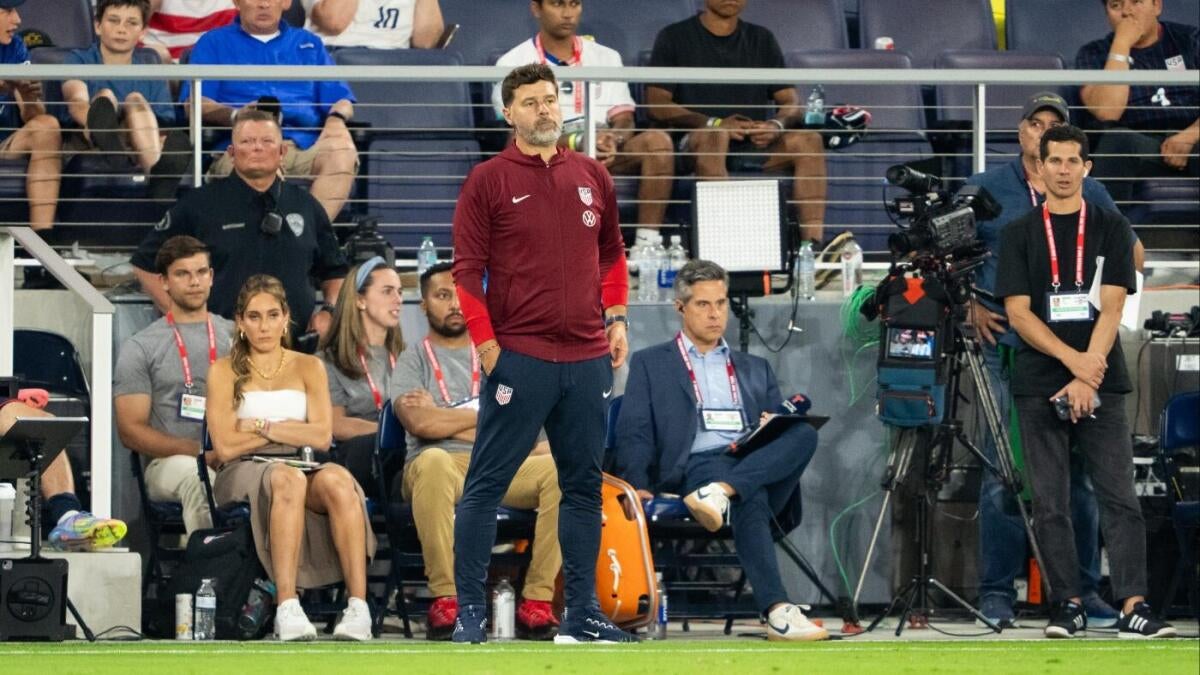The ongoing dialogue about the U.S. Men’s National Team (USMNT) reveals a rich tapestry of internal resilience, external pressures, and the weight of a nation’s hopes pinned on a sport still carving its identity in America. With the 2026 FIFA World Cup on the horizon—hosted on home soil—the dynamics at play extend far beyond the pitch, touching upon leadership philosophies, player welfare, tactical evolution, and the broader narrative of soccer’s place in the American sporting pantheon.
Embracing Criticism from Within: Tyler Adams and Team Mentality
Tyler Adams exemplifies a leadership style that emphasizes internal focus over external noise. His stance—“We don’t talk about that”—in response to pointed critiques, especially from former luminaries like Landon Donovan, signals a deliberate boundary-setting that protects team cohesion. In a world saturated by instant commentary and harsh analysis, this approach fosters resilience. It reflects a modern mindset in competitive sports, where managing the psychological environment can be as crucial as physical preparation.
By sidestepping public back-and-forths, Adams and his teammates prioritize preparation and execution. This mindset is particularly vital with the intensified scrutiny ahead of the 2026 World Cup on U.S. soil, where pressure will mount not only from critics but from the enormous expectations of fans craving a breakthrough on the international stage.
Balancing Legacy and Aspirations: The Weight of Past Voices
Criticism from former stars like Donovan, while rooted in a passion for American soccer’s growth, introduces tension. Some see these voices as unfairly harsh or hypocritical, a reflection of the gap between past glories and present struggles. This friction underscores a broader debate between honoring the foundations laid by predecessors and acknowledging the current team’s challenges amidst the sport’s rapid domestic expansion.
The mixed reactions from the fanbase mirror this ambivalence. While frustration arises from perceived inconsistency and a shortage of elite talent depth, there remains recognition of historic milestones such as the USMNT’s unwavering presence in every World Cup since 1990. This duality spotlights the delicate balancing act between celebrating progress and demanding genuine elite performance.
Managing Human Capital: Christian Pulisic’s Rest and Team Strategy
Christian Pulisic’s choice to opt out of the June camp and Gold Cup tournament highlights the evolving conversation about player management. Having logged around 120 matches over two seasons for club and country, Pulisic’s decision embodies a growing strategic emphasis on managing physical loads to ensure peak performance during crucial events.
This narrative goes beyond one individual; it reflects the broader realities faced by American players competing in congested schedules and grueling travel demands. By endorsing rest and recovery, the USMNT is acknowledging the importance of long-term sustainability in player health, which could be a decisive factor in securing success at defining tournaments like the 2026 World Cup.
Tactical Adaptation: Beyond Individual Flashes to Cohesive Performance
Adams’ candid admission about inconsistent individual performances gestures towards necessary tactical evolution within the team. The phrase “play in a different way” hints at potential shifts—whether in formation, playing style, or mindset—that could better align the team with the tactical complexities of competing both in the competitive CONCACAF region and on the global stage.
Critics pressing for change call into question the longevity of current coaching frameworks, especially after disappointments such as the Copa America results. This debate opens broader discussions about talent development systems, coaching philosophies, and innovation pathways needed to break free from cyclical plateaus and push American soccer toward new heights.
Soccer’s Societal Position: Growth Amidst Competing Sports Giants
Off the field, soccer’s struggle for prominence in America continues. Despite significant growth over recent decades, it still vies for attention against established staples like football, basketball, and baseball. Investment, infrastructure, and cultural validation lag behind these dominant sports, which colors much of the discourse around the USMNT’s results and the sport’s future trajectory.
Many recognize that the 2026 World Cup represents more than a tournament; it’s a potential catalyst for transforming soccer’s stature nationally. Progress will require strategic patience to balance immediate competitive success with nurturing sustainable growth—building pipelines that elevate talent and fan engagement simultaneously.
A Defining Moment: The 2026 World Cup as a National Soccer Milestone
The upcoming World Cup is undeniably a pivotal milestone. Seen as a rare “always delivers” event, it offers an unparalleled platform to spotlight soccer’s expanding footprint in the United States. For the USMNT, this means preparing to meet both technical and psychological demands while shaping a compelling narrative to unite players, fans, and the broader soccer community.
Leadership—both on and off the field—will be essential to channel pressure into performance. Players like Tyler Adams carry not only the captain’s armband but also the responsibility to foster belief and resilience as the nation watches intensely.
Conclusion: Harnessing Criticism to Fuel American Soccer’s Ascent
The present moment for U.S. men’s soccer is one of cautious optimism tempered by reality. Tyler Adams and the team’s choice to focus inward rather than engage publicly with criticism demonstrates a savvy approach to managing pressure. Their challenge now lies in translating potential into consistent, high-level performances, strategically managing player health, and embracing tactical innovation.
As the country prepares to host one of the world’s greatest sporting spectacles, the USMNT’s journey will serve as a vital barometer for soccer’s health in America. The blend of leadership, strategic foresight, and cultural momentum will determine if this historic opportunity sparks lasting transformation—turning critique into a powerful engine for progress and elevating American soccer onto the world stage.

